Education
INST Mohali | Institute of Nano Science & Technology
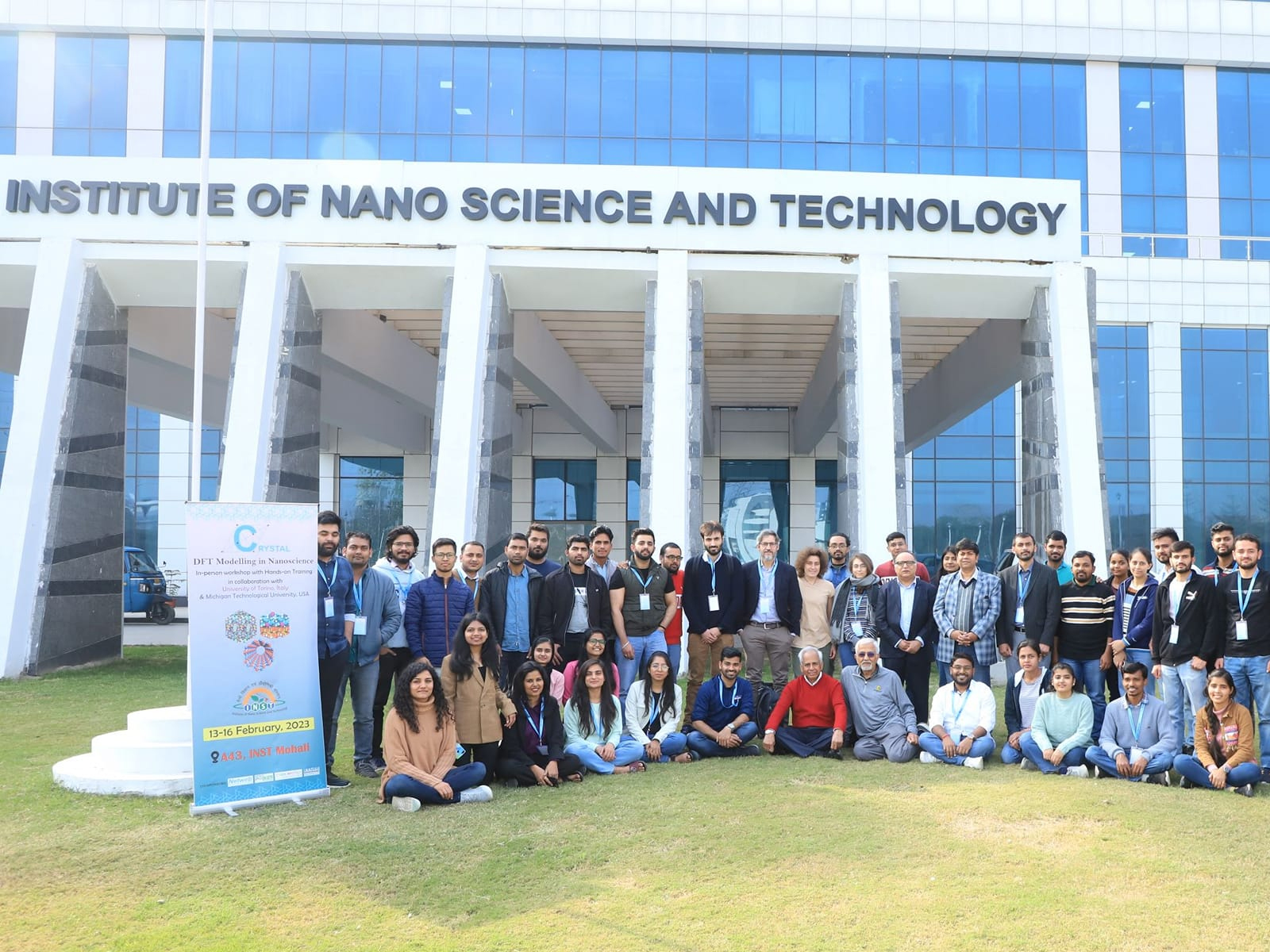
This article covers everything about INST Mohali. Get to know about its history, admissions process, courses offered, eligibility criteria, contact details, events, and other important information.
Prestigious History of INST Mohali
In accordance with the 2007 “Nano-Mission” launched by the government of India, a broad objective of basic research promotion, human resource development, promotion of international collaboration, direct industrial involvement in the development of Nano applications, and more were set as a growth plan.
With respect to working on the same lines, the government of India agreed on the establishment of INST in Mohali, which is a knowledge city. Moreover, it has been registered under the Societies Registration Act XXI of 1860. By the Registrar of the Societies of SAS Nagar vide Certification No. 2590, which dates back to 21st August 2009.
The Institute of Nano Science and Technology (INST) was established in January 2013. Also, it is an autonomous institute in Mohali, Punjab. It was the Department of Science and Technology (DST), Government of India, that took the initiative to start this institute under the Nano mission to improve India’s reach, research, and development in the field of Nano Science and Technology.
In 2020, the campus of INST shifted to Sector-81 of Mohali, which has over 35 acres of land. The Institute of Nano Science and Technology includes research programs in Physics, Chemistry, Biology, and interdisciplinary sciences. Additionally, it discusses issues in chemical biology, quantum materials, the environment, nano-devices, and the field of energy.
Aim and Mission of the Institute
INST Mohali aims to emerge as the country’s foremost research Nano Science and Technology institute. It is a place where engineers, biologists, chemists, physicists, and material scientists together have an affinity toward the field of Nano Science and Technology.
The primary aim of this institute is to come up with new technologies, solutions, and processes in different sectors of – healthcare, defense, energy, environment, water, and agriculture.
INST comes up with a lot of activities that contribute to some of the major programs of importance to the nation, such as Swasth Bharat, Swachh Bharat Abhiyan, Smart Cities, Smart Villages, Make in India, Clean & Renewable Energy, etc. Additionally, the institute offers robust solutions and technologies to combat issues related to these programs.
They also have a philanthropic program called the “School adoption program,” which was launched in the year 2015. Through this program, the institute provides the required infrastructure, technological information, and incentives to Government schools in India.
The institute also formulates programs for rural and remote areas targeting the young generation to make them aware of the development of technological solutions.
The exclusive mission of INST Mohali is to ideate solutions, devices, and technologies for defense and commercialization. They also aim to generate affordable devices for the healthcare sector.
Noteworthy Objectives of the Institute of Nano Science & Technology
Some of the schemes on which the institute works are as follows –
- Building of infrastructure and Manpower
- Promotion of research activities in the field of nanoscience and technology
- Giving excellent training to the Ph.D. students
- Imparting advanced training and laboratory techniques at the highest level possible
- Organizing and promoting the students under training to attend national and international level conferences and seminars
- Encouraging novel and challenging innovations and tech/product-based projects
- Publishing scientific research papers that have an impact
- Generation of patents in Nano Science and Technology
- Incubating translational research that reaches the industries from the lab
Modern and High-Tech Facilities at INST
The Institute of Nano Science and Technology promotes research and technology in the field. Since the mission of the facility is so high, advancement in infrastructure and research inventory is important. As a result, the institute has the following technological advancements.
- Research Lab with a microscope, scattering system, analyzers, fluorometer, calorimeter, rheometer, electrochemical workstation, diffractometer, and surface profiler.
- Laboratory with Electron microscopes such as SEM (Scanning Electron Microscope), TEM (Transmission Electron Microscope), and AFM (Atomic Force Microscope).
- Spectroscopies include UV-Vis spectroscopy, Raman spectroscopy, UV-Vis spectroscopy, and Photoluminescence spectroscopy.
- XRD (X-ray diffractometer), Thermogravimetric analysis, Differential Thermogravimetric analysis.
- Library with around 400 books in Nanoscience and Nanotechnology, Seminar Hall, computer center with good speed internet for study or related work. Auditoriums, State-of-art instruments.
Administration of INST Mohali
There is a board of Governors consisting of researchers, administrators, and academicians who manage the Institute of Nano Science and Technology. Prof. Uday Maitra is the chairman of this institute, and the founding chairman is C.N.R. Rao of Jawaharlal Nehru Centre for Advanced Scientific Research (JNCASR), Jakkur, Bangalore.
Ashok K Ganguli was the director of this institute when it started in January 2013. From January 2018 to March 2020, Hirendra Nath Ghosh was the director. Amitava Patra has been the current director since 11 March 2020. The family of INST can reach out to him through director@inst.ac.in for direct communication.
INST Faculty
The Institute of Nano Science and Technology has a notable faculty consisting of scientists and researchers. The faculty here is well-experienced and well-qualified, with Ph.D. degrees and various research papers published in the field of Nano Science and Technology.
There are a total number of 36 scientists and a total of 14 administrative staff.
Professor Amitava Patra is the Director of INST in Mohali. Some of the notable faculty members from the Institute of NanoScience and Technology are:
Dr. Debabrata Patra is the associate professor of this institute. His academic qualifications are B.Sc, M.Sc, Ph.D.
Prof. H. N. Ghosh is the Professor at this institute. His academic qualifications are B.Sc, M.Sc, Ph.D.
Dr. Jayamurugan Govindasamy is the associate professor of this institute. His academic qualifications are B.Sc, M.Sc, Ph.D.
Dr. Kamalakannan Kailasam is the professor at this institute. His academic qualifications are B.Sc, M.Sc, Ph.D.
Dr. Menaka Jha is the Scientist-C of this institute. Her academic qualifications are B.Sc, M.Sc, Ph.D.
Dr. Monika Singh is the Scientist-C of this institute. Her academic qualifications are B.Sc, M.Sc, Ph.D.
Dr. Prakash P. Neelakandan is the Associate Professor of this institute. His academic qualifications are B.Sc, M.Sc, Ph.D.
Dr. Ramendra Sundar Dey is the Scientist-C of this institute. His academic qualifications are B.Sc, M.Sc, Ph.D.
Dr. Sonalika Vaidya is the Assistant Professor (Scientist-D) of this institute. Her academic qualifications are B.Sc, M.Sc, Ph.D.
Dr. Tapasi Sen is the assistant professor (Scientist-D) of this institute. Her academic qualifications include B.Sc, M.Sc, and Ph.D.
Dr. Vivek Bagchi is the Scientist-C of this institute. His academic qualifications are B.Sc, M.Sc, Ph.D.
Significant Areas of Research of the Institute
The major areas of research where The Institute of Nano Science and Technology, Mohali, wants to research are Device Physics, Sensors, Agriculture Nanotechnology, Medical Nanotechnology, Nano Biotechnology, Quantum materials and Device Physics, Nano technology-based solutions, and devices related to energy and environment.
Also, under the umbrella of research, INST Mohali provides the opportunity to dive into industrial and sponsored projects. Well-researched publications of various eminent scientists are available on its official website.
Units of The Institute of Nano Science and Technology
The three departments or units of this institute are Energy and Environment Unit, Chemical Biology Unit, and Quantum Material and Devices Unit. Although they are the main units, there are specialized diversions related to each one of them.
Courses Offered at INST Mohali
The courses offered at INST are:
1. The first course is a Ph.D. which has a duration of 3 years. For those ones who want to take their respective field ahead and continue the progression of learning, Post Doctoral for a duration of 2 years is also available.
2. Research Internship with a minimum duration of 3 months and a maximum of 12 months is open for all the aspirants
3. Not to miss the Project Fellowship, which is equally useful and beneficial.
Application Procedure
The students are selected on the basis of ranks obtained in entrance exams like GATE/CSIR or UGC-NET/JEST/JGEEBILS (TIFR/NCBS)/ICMR-JRF/DBT-JRF/DST-INSPIRE/GPAT.
For Ph.D. Programs in INST Mohali
Steps for admission to the Ph.D. program:
- You can apply if you have a degree of M.Sc. or M.Pharm or M.Tech degree, in general,/Applied Sciences/Engineering or similar fields. Final-year students who can produce the degree at the time of joining can also apply.
- Visit the official website of INST. Download the application form and fill in all the information required carefully.
- The candidates should send the filled form and Synopsis to apply@insta.ac.in as an advance copy.
- Then the candidate has to send some of the documents along with the application form. This needs to be sent to the permanent address of the institute, which is – The Habitat Centre, Phase – 10, Sector – 64 Mohali – 160062.
The documents must include the following:
- Photograph of the Candidate
- Age Certificate
- Candidate’s Educational Qualification (Mark Sheet, Degrees and Certificate of Class 10, 12 and Bachelor’s/Graduate degree, Master Degree Final Marksheet.
- Work Experience certificate in case of a working candidate.
- SC/ST/OBC/PH category certificate – valid and self-attested copies.
After the shortlisting process is completed, the selected candidates are invited for an interview. Post the discussion, the candidates are shortlisted again. A form with the names of the selected candidates is displayed on the official website.
The institute pays for the travel expenses of the candidate for the Rail (Sleeper Class) or Non-AC bus. Candidates need to show the tickets as proof.
Bank Details
The candidate must pay the application fees online to the bank account INST Mohali. You must mention your full name during the transaction. For the General, OBC, and EWS categories, there is a fee of INR 590. For SC.ST, and PH categories, there is a fee of INR 295.
Refer to the mentioned-below details of the bank to pay the required amount.
Account Name: Director, INST Mohali
Account Number: 2452201001102
IFSC Code: CNRB0002452
BANK: CANARA BANK, Sector 34A, Chandigarh 160022
Application Procedure in INST for Internship Programmes
If you are a candidate from any Basic Sciences/Applied Sciences/Engineering Institutes/Universities, you are eligible to apply for an internship at INST Mohali. The scientist or supervisor needs to agree to guide the candidate applying for the Internship.
- Candidates seeking an internship can fill out the application form online.
- Upload all the documents as required and make sure that the documents are scanned properly. Low-quality scans or blurred copies of the documents will be rejected.
- The senior authorities go through all the candidates. The institute sends an e-mail to the selected candidates.
Application Dates of Internship Programmes
Summer Internship
Application Date: 1st March – 21st March
Duration of Programme: May – July
Short Term Internship
Application Date: 1st April – 21st April
Duration of Programme: June – December (3-6 months)
Research Internship
Applications are accepted throughout the year.
Duration of program: 1 year
The institute does not provide any stipend to the interns in INST Mohali. Students need to bear their own expenses. There is a Funded Internship program only for the ST candidates where they get an allowance of INR 10,000 every month for Research Projects in Nanoscience and Nanotechnology.
Campus Life at INST Mohali
Besides imparting the best quality technical and scientific knowledge, the campus organizes various seminars and conferences for real experience. From celebrating little things to being a part of international-level meetups, INST is not behind.
Some of the noteworthy events are teachers’ day, Swachh Bharat Program, the 8th MRS trilateral conference, yoga day, and more. Researchers and students of the institute have always found solutions to fight the issues, be it agricultural or any other.
Conclusion
INST in Mohali combines fundamental science with advancements in technologies to deal with problems that are of national and global importance.
For more information, visit the official website of the institute and the Facebook page.
Address
Sector – 81, Knowledge City, Sahibzada Ajit Singh Nagar, Punjab, Pin – 140306
Timings
Monday – Friday (9 am – 5 pm)
Contact No
0172 221 0075, 2210057, 2210056
cfao@inst.ac.in
Website
Education
Best IAS Coaching in Chandigarh: Your Dream Meets Reality
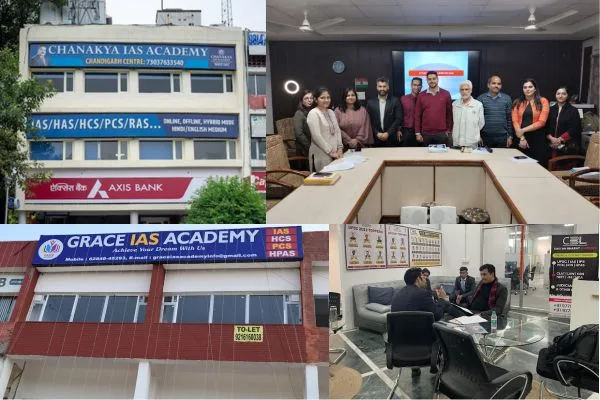
As a child, everyone has heard about this term or some might have dreamed of becoming one. However, many drop the idea of becoming an IAS officer due to the difficulty of becoming one. Students spend their whole lives studying for IAS and some do shine but not all. To fulfill that dream of becoming an IAS, the best IAS coaching in Chandigarh has knocked on your doors.
Best IAS Coaching in Chandigarh
All the national exams are hard to crack. It takes a lot of determination and hard work to become successful. Most students back off after one or two tries and drop their dream of becoming an IAS officer.
They don’t get the proper guidance and self-study is not everyone’s winning point. This is one of the main reasons students lose hope and confidence and prefer to choose another profession instead of giving one more try.
Good guidance can positively boost the morale of such students and to fulfill your dream. Chandigarh’s coaching centres will do their best to guide and boost your confidence. Let’s talk about the best IAS coaching in Chandigarh.
Chanakya IAS Academy
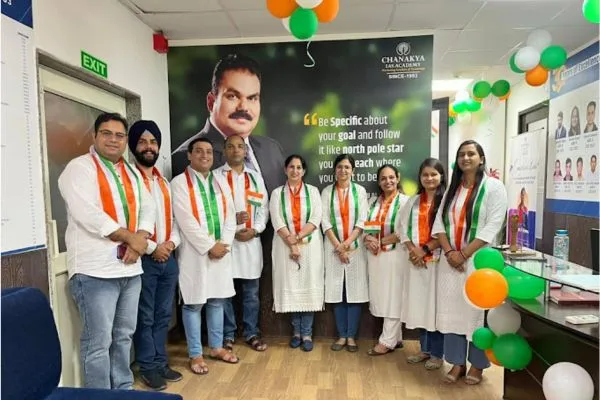
Chanakya IAS Academy is one of the leading IAS coaching academies in Chandigarh. Since its establishment in 1993, it has been serving students to fulfill their dreams of becoming an IAS officer.
The academy has fulfilled the dreams of 5000+ students and is continuing to do so. It has provided comprehensive training programs to students for over 3 decades. Chanakya IAS Academy is not only limited to Chandigarh but has 22 centres across India.
The faculty is highly experienced in their field and the course resonates with the students’ desires. The academy has empowered more than 5000+ students to become IAS, IFS, IPS, IRS, and other such respectful services.
Reasons for Choosing the Academy
- It covers the general studies, CSAT, Essay Writing, and Interview guidance programs for UPSC exams. Students learn through classrooms, assessments, tests, and workshops. Thus giving them a preparation strategy.
- The pre-test series offered by the academy is important for clearing the Prelims. These tests are built to enhance the analytical skills, focus areas, and accuracy in students.
- Apart from the pre-test, it offers the Main Test Series helping students fill the learning gaps and cover the vast syllabus.
Admissions for UPSC (target 2025)
| Date | Mode | Language |
| 10th June | Offline and Online | English |
| 10th June | Offline and Online | Hindi |
Contact Information
Location: Sector 22B, Chandigarh
Phone Number: 82641 99959
Join one of the best academies and fulfill your dream of becoming an IAS officer.
Raj Institue
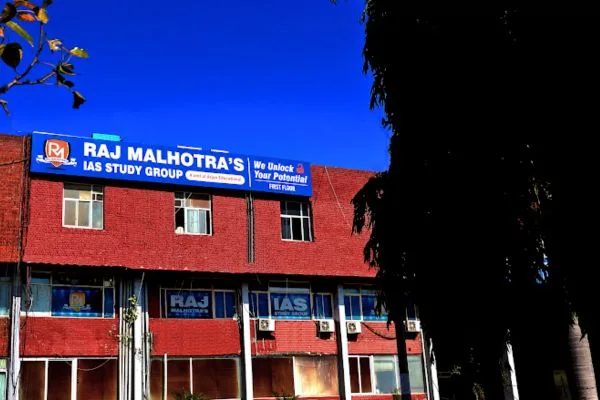
Raj Malhotra’s IAS academy is another brilliant academy in Chandigarh for cracking the civil service exams. The institute has over 25 years of experience and has been mentoring aspirants for IAS, PCS, HCS, HAS, and other such exams.
More than 12,500+ aspirants have successfully become what they dream of becoming and more than 2,000 students have become officers. Moreover, Raj Institue has 50+ experienced faculty always giving the best education to students.
Reasons for Choosing Raj Institue
- The academy offers a daily discussion of Current Affairs. It helps students to stay informed about the current happenings of the world.
- Students have access to talk about the major issues happening around the world with the specially curated Editorials by the academy. This enhances their critical thinking and broadens their perspectives.
- The engaging quizzes help students enhance their knowledge of various subjects.
- The academy also offers Mains Answer Writing enhancing students’ familiarity with the exams.
Courses offered by the Institue
- NCERT Foundation Courses
- IAS Preparation Foundation Course
- State Civil Services: PCS/HCS/HAS
Contact Information
Location: First Floor, Dainik Bhaskar Building, Sector 25, Chandigarh
Phone Number: 70870 00437
The academy is active on various platforms like Linkedin, Instagram, Facebook, and Twitter, where you can follow them for updates. Raj Institue is a kind institution fulfilling the dreams of many students.
Chetan Bharat Learning
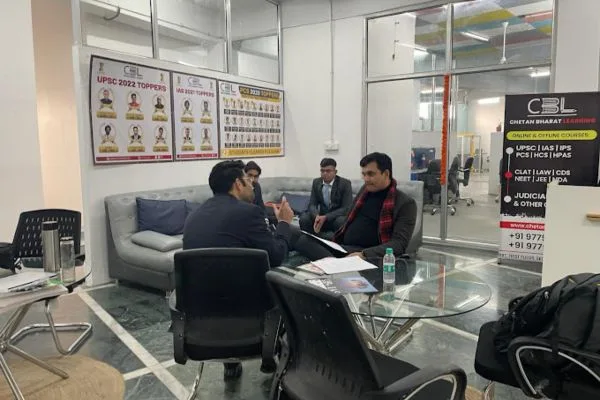
Chetan Bharat Learning is another brilliant academy for UPSC aspirants. Since its establishment in 2019, CBL has offered a helping hand to thousands of students pursuing their dream jobs.
It offers in-depth study of civil services, government jobs, CLAT, and many more. The academy uses state-of-the-art technology and facilities to help students grow and fulfill their dreams.
The academy is highly active on YouTube, sharing insightful study tips and material with students. Chetan Bharat Learning focuses on education with affordability. If you dream of pursuing a career in the IT sector then Gian Jyoti Institute of Management and Technology, Mohali is one of the top choices for your bright future.
Features for Choosing CBL
- The academy has its own website and app for students to learn online.
- The curriculum is designed entirely on the UPSC guidelines and syllabus.
- When you become a part of the academy, you do not have to worry about learning from extra books.
- You will have a daily reading session and live newspaper coverage for a better understanding of current affairs.
- The academy offers various Test Series for students to analyze the pattern and difficulty of the exams.
- Live Mentorship and Guidance Sessions with UPSC toppers will boost the confidence of all aspirants.
- The academy also offers personalized study sessions with the faculty.
- Students can study disturbance-free in the 24/7 5G enabled library.
- The academy has group discussion areas for students to interact with each other. This helps in better understanding and a sense of familiarity.
All these factors are ideal for choosing CBL as your destination to fulfill your dream of becoming an IAS officer.
Courses Offered by CBL
| Course | Content |
| Prelims Specific Course |
|
| Foundation Course |
|
| Comprehensive Online Course |
|
| Comprehensive Offline Batches |
|
| Optional Course |
|
| UPSC Mentorship Course |
|
Contact Information
Location: Plot No 240-241, Industrial Area Phase 9, Near Chandigarh Airport, Mohali
Branch Office- First Floor, ISBT Sector-43, Chandigarh
For UPSC contact: 89681 43745
For PCS contact: 89683 38745
Grace IAS Academy
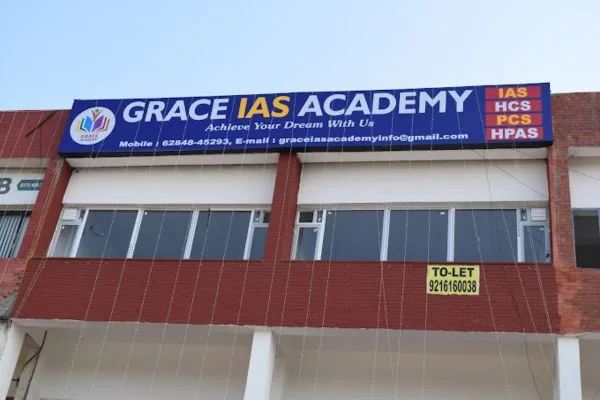
Grace IAS Academy is another well-established institution in Chandigarh. The academy aims to fulfill the dreams of many students to crack the Civil Services and other Central and State services exams.
To fulfill their dreams, Grace IAS Academy takes great measures like conducting various programmes like:
- Inspirational Lectures
- Knowledge-based class-room teaching
- Various Practice tests
- Preparing for personality tests conducted by UPSC.
The faculty are professionals in their fields and highly dedicated to provide the best learning experience. The academy focuses on cracking various exams like IAS, PCS, HCS, HPAS, and CDS.
Courses Under Grace IAS Academy
- GS MAINS
- GS Prelims
- Optional Subject
- Test Series
Contact Information
Location: Sector 36 D, Chandigarh
Phone: 6284 845 293
Become a part of the academy and experience the happiness of making your dream come true.
O2 IAS Academy

O2 IAS Academy provides one of the best IAS coaching in Chandigarh. Being one of the leading Civil Services coaching institutes, it has fulfilled the dreams of various students in Chandigarh.
The academy has given amazing results in the previous years as the students are prepared with precision to crack these exams. All the lectures are prepared according to the UPSC pattern. The interactive sessions at O2 IAS Academy help students grasp better knowledge about the subject.
Moreover, it is located close to various educational institutions like PEC, PGI, DAV, and Punjab University. Join the world of 02 IAS Academy and learn from the best in town.
The Various Departments of the Academy
1 UPSC/ IAS
Preparation for Civil Services Examinations with innovation and good-quality teaching.
2 Haryana Civil Services and Other Allied Services
A comprehensive study material and full syllabus coverage.
3 Punjab Civil Services
Focus on current affairs of Punjab and updated syllabus.
4 Himachal Pradesh Administrative Services
Providing relevant content with detailed study material and lectures.
5 Interview Coaching
Covers all the aspects of HCS interview and prepares for mock interviews with ex-civil servants. It includes HAS, HPAS, PCS, and IAS.
6 Online Courses
It includes YouTube, videos, mobile apps, and online classes. The students are attended to personally for their better understanding.
Contact Information
Location: SCO 172 Top Floor, Sec 38 C, Near Corporation Bank, Chandigarh
Phone Number: 9872124143
The academy will not let you down if you are determined to become what you dream of becoming. Join the academy for an enriching learning experience.
Divine IAS Academy
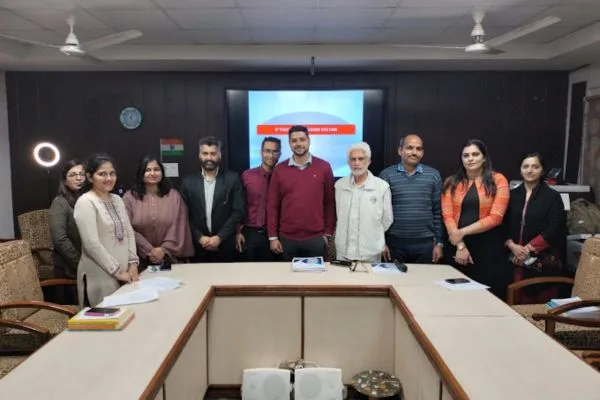
Divine IAS Academy is another professional in the field of IAS coaching. It has been serving the students to reach their goals. The advanced approach to teaching is the reason behind the academy’s success.
The guidance of the experienced faculty has given excellent results in building students’ careers. There are various reasons for choosing Divine IAS Academy:
- The academy offers Live Online Classrooms for students who cannot visit the academy.
- The study material is updated regularly according to the exam pattern so that it includes all the important information.
- Online/ Offline Tests are conducted regularly for students to work on their weaknesses and fill the gap.
- The teaching staff is highly qualified.
- The academy also offers a monthly current affairs magazine to familiarize students with the current happening in the world.
- There are pre-recorded classes available for students so that they can watch the content they want anytime.
- The academy holds regular doubt sessions for students to clear out any problems they are facing in their studies.
- Regular polls and quizzes enhance student activity while teaching them new things.
Contact Information
Location: SCO 209, First Floor, Sector 36 D, Chandigarh
Phone Number: 9779737877
Unlock the possibilities of becoming who you want to be with Divine IAS Academy.
Final Note
Dreaming and working hard to fulfill that dream are two different things. These institutions will help you secure both your dream and the journey to fulfill that dream. Experience the best IAS coaching in Chandigarh with these institutions and make yourself and your family proud of what you will become in the future.
Education
The Best Library in Chandigarh and Others Worth a Visit
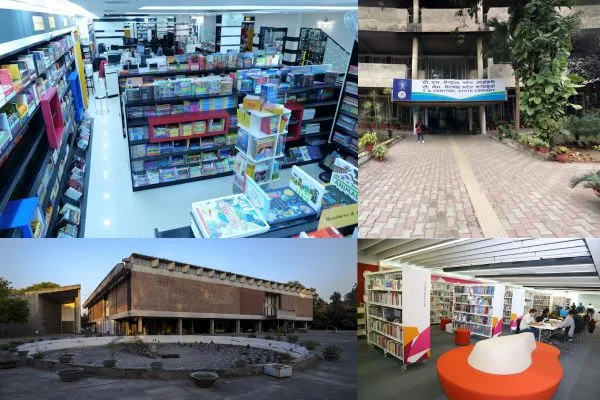
Libraries are considered one of the greatest sources of knowledge. You can visit a library and discover facts or information you never even knew existed. You are in a different world when you visit a library. Even though the internet has an abundance of knowledge, the essence still remains in reading a book. If you love reading or visiting libraries, you should definitely visit the best library in Chandigarh along with others.
Library in Chandigarh
Reading books is passed down from generation to generation. We have been taught reading from a very young age. Most people stop reading after a certain age or when they have alternatives, however, some people still prefer reading as a source of knowledge.
Every state in India has its own library, in fact, every city has its own library. Just like every other place in India, there is a library in Chandigarh worth a visit. Moreover, there is more than one library that you should visit if you love reading and exploring new libraries.
The State Library: Best Library in Chandigarh
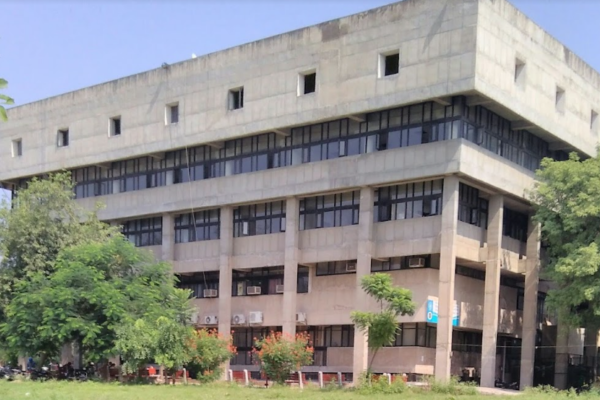
The State Library is the best library to visit if you love a unique collection of books along with various events. The library offers various services:
Reading Rooms
The library offers separate reading rooms for people to enjoy privacy and read in their comfort. No one likes disturbances and the authority has kept in mind the needs of the readers.
CD Collection
It has a brilliant collection of old records to soothe the minds while they read. A little background music enhances concentration. Moreover, CDs remind you of the old times. Enjoy some good music while reading your favorite book.
Free WiFi
Readers can enjoy free wifi in the library. If you don’t have a good internet connection to do some online research, you can always rely on the library’s wifi.
Separate Reading Room for Disabled Readers
There is a separate reading room for readers with disabilities. This ensures they don’t feel discomfort of any sort.
Huge Collection of Various Languages
The library is home to various unique and interesting books from Hindi, Marathi, English, and Gujarati languages.
Event Hosting
The State Library hosts various events like Chandigarh Sahitya Akademi, Chandigarh Sangeet Natak Akademi, and Chandigarh Lalit Kala Akademi. These creative events are open to all readers.
Visit the library yourself and discover the amazing collection of books it holds. You will be amazed by the collection and the events.
Location
Opposite Gurudwara, Sector 34A, Chandigarh
Timings
Before visiting the library, keep in mind the opening and closing hours.
Open: 08:00 AM
Close: 07:00 PM
Beant Singh Memorial Library
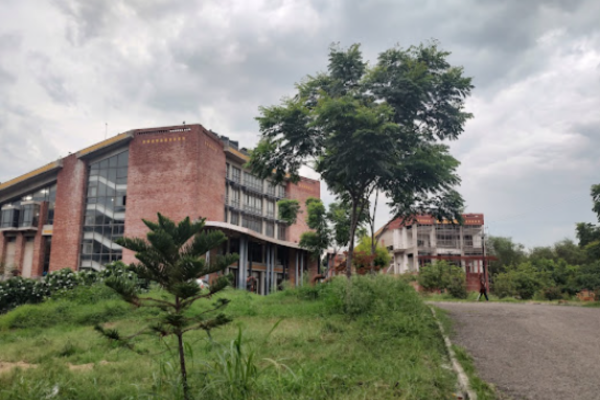
Beat Singh Memorial Library is another amazing library in Chandigarh. It is a religious library offering books on literature, religion, and history. Moreover, the library holds biographies of various famous and prominent Indian figures.
It was established in 1995 by Beant Singh aiming to preserve and promote the culture, and literature of Punjab. It has various journals and literature on the old Punjab.
You can read the history of the great wars fought in the world and get more insight into the history of India. The library has an excellent seating arrangement with every shelf filled with good books from top to bottom.
It also has various rare and unique manuscripts and books you can read when you visit this beautiful library. You can participate in various cultural activities like book exhibitions, literary festivals, and cultural events.
Address
Sector 42D, Near New Lake, Beant Singh Memorial, Chandigarh
Timings
The library is open from 08:00 AM to 08:00 PM.
The Browser Library and Bookstore

The library has a wide range of fiction and non-fiction books. Moreover, it also has a collection of children’s literature. It was established in 1995 and is known as a second-hand book dealer in Chandigarh.
You will be amazed to explore the collection of books ranging from romance, action, fantasy, and much more. Visiting the library is an absolute comfort and delight. The uniqueness lies in the fact that it is a publishing house, a library, and a bookstore.
Read the best books from the leading publishers in the world and experience the peace reading offers in one of the best reading places in Chandigarh. If you love food and reading together then enjoy a good read in these Rooftop Restaurants with the city view.
Location
Sco- 14,15, Sector 8C, Chandigarh
Timings
Monday to Saturday: 10:00 AM to 6:30 PM
Sunday: Closed
British Council Library
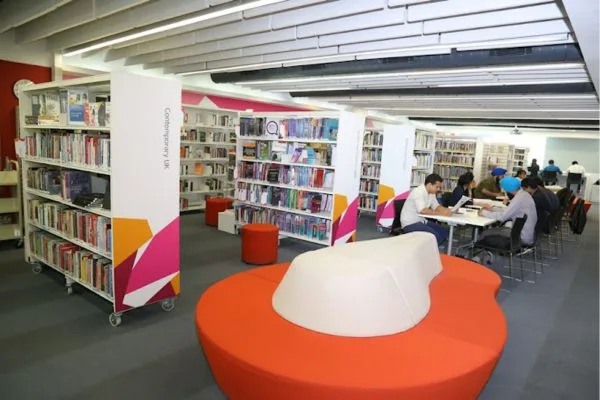
British Council Library is filled with amazing books ranging from fiction, non-fiction, and many more. If you are someone who loves to explore new genres, then this is the place for you! All literature and poetry fans should definitely visit the library for its good literature and poetry books.
It has both hardcovers and digital publications of books to fulfill different needs. Moreover, you can also experience the magic of e-journals, and e-movies. The library offers memberships to people and even the non-members can access the books.
Location
178A, Elante Office Block, 515, Industrial Area Phase I, Chandigarh
Timings
Monday to Saturday: 11:00 AM to 07:00 PM
A.C. Joshi Library
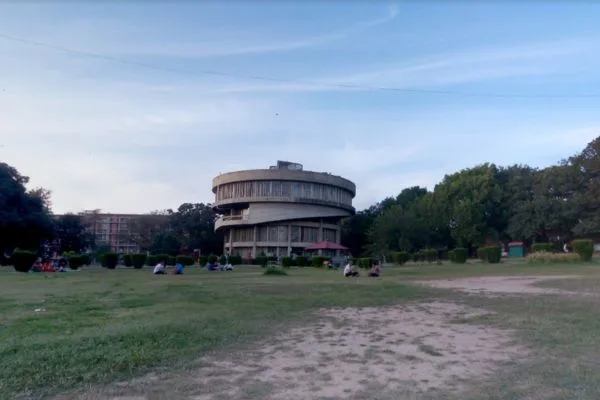
Even though A.C. Joshi Library is a part of Panjab University, it is open to outsiders too. The library is one of the biggest sources of online and offline information. A.C. Joshi Library was inaugurated by Jawaharlal Nehru back in 1963.
It is equipped with ACs and computers for readers to enjoy their reading journey. It is considered a heritage in Chandigarh. The library designed by Pierre Jeanneret is one of the most beautifully designed buildings in the city.
The library offers more than just books, it is also home to various heritage furniture designed by Jeanneret. You can also explore the Manuscripts and Rare Books section of the library. If you are a student of Panjab University, you should definitely visit this heritage space in PU.
Location
Panjab University, Sector 14, Chandigarh
Timings
24 hours a day
Remains closed on Sundays and public holidays
Government Museum and Art Gallery Library
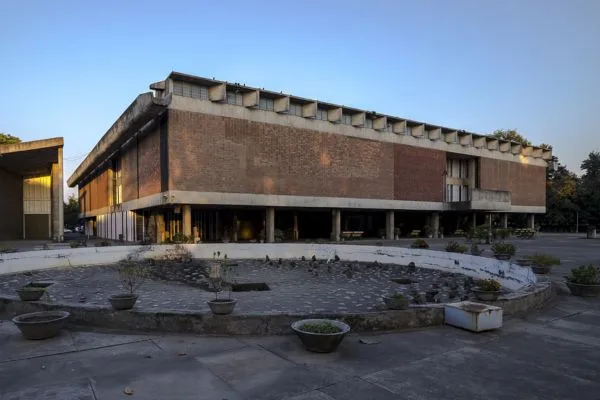
The library is located in the well-known Government Museum and Art Gallery. Readers who love art should definitely visit this library for its extravagant books on art, and other interesting fields like archeology.
Just imagine a book within a museum, such a splendid feeling right! The museum gives it an aesthetic look and aura. Experience the best hours of reading within the walls of this beautiful and cozy library.
The library is often visited by art lovers or people who love exploring museums for being a part of museum and art galleries. If you visit the museum, you should explore this hidden gem too.
Location
Sector 10C, Jan Marg, Chandigarh
Timings
Tuesday to Sunday: 10:00 AM to 4:30 PM
It does not open on Mondays and public holidays.
TS Central State Library
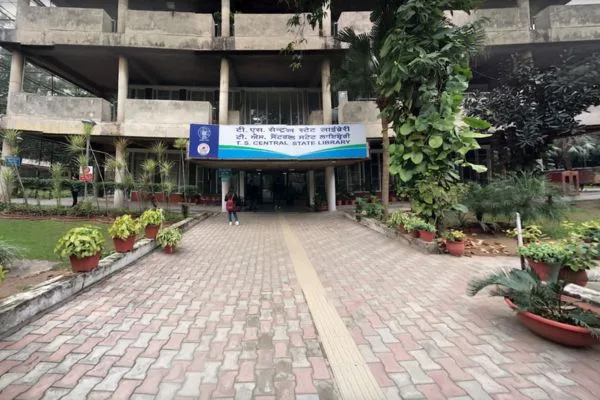
The library was established in 1955 and is known as one of the top libraries in Chandigarh. It has an amazing collection of more than 2 lakh documents. The library is rich in English literature books.
Moreover, it also offers social services by lending books to people in need. Surround yourself with the vast collection of books and enjoy a good reading experience. You can also read 40+ newspapers and 100+ magazines if you don’t feel like reading a book.
Location
Sector 17, near the DC Office, Chandigarh
Timings
Monday to Saturday: 10:00 AM to 5:30 PM
Closed on holidays and the last Saturday of every month.
Capital Book Depot
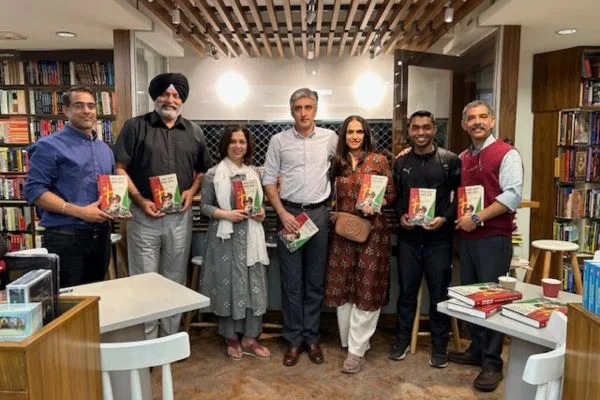
Capital Book Depot is an ideal place for bookworms. If you are a peace-lover, then this place is the perfect spot for you. It has a wide collection of famous books, literature, and even photobooks.
Moreover, you can read various graphic novels and comics if you love anime. You will enjoy the aura of the Book Depot.
Location
Near MC Office, Sector 17, Chandigarh
Timings
Monday to Saturday: 11:00 AM to 8:00 PM
It does not open on Sunday.
Final Note
Reading books is an important aspect of life. No matter the amount of time you use your device to read something, you will need books to gain more insight and knowledge. Reading has seen different ages and despite everything available on the internet, none can surpass books. If you love reading, visit the best library in Chandigarh along with other amazing ones, and spend some quality time with yourself.
Education
Judiciary Coaching in Chandigarh: Best Coaching Centers

Chandigarh is known as one of the best cities in India for so many things. It has an excellent nightlife experience, it is filled with extravagant cafes, it has beautiful sightseeing places and a great hub of education and job opportunities. Just like every other field, students who opt for legal studies need a guiding light to excel in the field. Explore the best judiciary coaching in Chandigarh.
Judiciary Coaching in Chandigarh
If you are planning to excel in legal studies and want to prepare for judicial services exams, then you surely need good guidance in your life. Judiciary coaching centers provide a comprehensive study of the topics. They provide a well-planned structure of the content you need to focus on to prepare for exams.
Even though you feel you can self-study, you cannot entirely know the paper’s structure or what you need to study. That’s why coaching centres help you attain what you desire.
If you want to pursue legal studies as a career you should reach out to the judiciary coaching centers in Chandigarh.
Jury Law Academy

Jury Law Academy is a great choice if you want to pursue legal studies as a career. It also provides law entrance coaching. This coaching specializes in training aspiring law students for entrance examinations for major law schools and universities.
The Academy specializes in educating students for such competitive exams. These exams require a vast knowledge of legal concepts. They also need a focus on critical reasoning and analytical skills. Jury Law Academy excels in every aspect of cracking these exams.
It provides a One Year Programme, which is quite a popular course. The students got admission to their dream law schools with the help of the program.
Apart from that, it also provides a six-month programme specifically curated for cracking law entry exams. The probability of cracking those exams is always high with the academy. Furthermore, the academy also provides crash courses to students.
Location: SCO- 112, Sector 34A
Apex Legal Institute

Apex Legal Institute is another well-established coaching centre in Chandigarh. As the name suggests, it always provides the top education and learning for the students. Furthermore, the institute provides training for various exams.
It serves as a steppingstone to excel in the career of law. You can always ace your career with Apex Legal Institute and crack any competitive exam after receiving the best knowledge and education.
The institute offers training for various competitive exams preparation for Law Entrance Exams like AILET, CLAT, PU, and KUK. Furthermore, you can prepare for the Law Officer Exam, Legal Clerk, and UGC-NET in Law, with Apex Legal Institue.
You can always rely on the institute to clear out any competitive exam by learning from the most experienced, and well-qualified faculty members.
Location: SCO 136, Sector 24D, Chandigarh
Divine Institute for Judicial Services

Divine Institute for Judicial Services is yet another incredible institute for judicial training in Chandigarh. Students from all over India like Delhi, Himachal, Bihar, Orissa, Punjab, and others, have been a part of this coaching institute.
The institute has centres in Chandigarh and Ranchi, where the students receive excellent coaching and training. Divine Institute for Judicial Services is a dedicated faculty that offers the best education for the students.
It provides coaching services for the post of Civil Judge which is the entry point for judicial services in India. With its 12 to 15-month coaching period, students can extensively prepare for judiciary exams.
Moreover, the academy provides 3 days of free demo classes so that you can decide to join the academy for a bright future ahead.
Location- SCO 209, Sector 36D, Chandigarh
Latika Law Academy

Latika Law Academy is one of the leading law academies in Chandigarh. It offers a comprehensive guide to crack various judiciary exams. The students get to explore various aspects of law study.
It is one of the most renowned CLAT coaching institutes in Chandigarh. The sessions are interactive and resourceful. Latika Law Academy has an association with more than 10 colleges. It focuses on preparing for Judiciary services coaching like CLAT, and entrance tests for leading National Law Universities.
Students receive quality experience as the academy conducts mock tests, individual mentoring, admission counselling, and a group of experienced faculty. Open your doors to success with good judiciary coaching in Chandigarh.
Location- SCO 373, Sector 32D
Chandigarh Judicial Academy
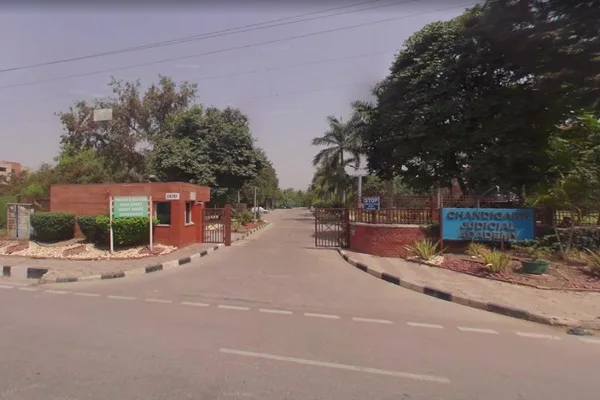
Chandigarh Judicial Academy is a government-owned academy that believes in knowledge for Justice. The institute was set up by the efforts of the Supreme court. Chandigarh Judicial Academy was established after the Supreme Court decided to establish an institute for imparting judicial education.
The Academy gives the students excellent training to prepare them for national-level entrance exams. It also provides various courses. If you are looking for good medical colleges then apply to these 10 Best Medical Colleges in Chandigarh To Become A Healthcare Expert.
Location- Sector 43-D, Chandigarh
Anil Khanna Academy of Law

Anil Khanna Academy of Law is another amazing institute for students who want to pursue law as their profession. The Academy offers judicial training to students from across the state. Many students from Punjab, Haryana, Himachal, Odisha, and others, have been a part of the academy.
Anil Khanna, the owner of Anil Khanna Academy of Law held online classes during the Covid period. He has now started to take offline classes for students. The academy offers various courses, each has its own duration.
You can excel in various exams like UGC NET, and CLAT. State Civil Services. Furthermore, the academy offers training for becoming Assistant District Attorney, and others.
Location- SCO 145-146, Sector 17C, Chandigarh
Resilience Law Academy
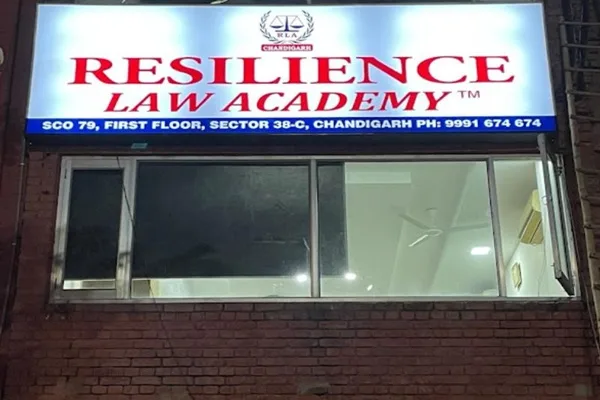
Resilence Law Academy is not only popular in Chandigarh but also throughout India, it offers extensive and resourceful judicial exam preparation for all students. The academy has been a guiding light for many pursuing law as their career.
Apart from judicial exams, Resilience Law Academy also offers courses for UPSC and State Civil Services with law. Young minds are always given comprehensive training to excel in exams like CLAT and CET.
The Academy offers diverse training programs. You can always access the recorded lessons on your device anywhere you want. It provides a group of professional teachers for subjects like study Criminal Law and Civil Law.
Location- SCO 79, Sector 38-C, Chandigarh
Final Note
Judiciary has become a field of interest for many students these past few years. Therefore, gaining comprehensive exposure to the curriculum of the profession is important. Judiciary Coaching in Chandigarh is a success with these coaching institutes and academies. You should definitely consider applying to either of these coaching centres if you desire to excel in law. These institutions are a beacon of success and disappointment is not an option.
-

 Property8 months ago
Property8 months agoWho Lives In Homeland Mohali: Punjabi Celebrities, Business People…
-

 Jobs3 years ago
Jobs3 years agoTop 20 IT Companies in Mohali
-

 City Guide1 year ago
City Guide1 year agoTop 12 Rooftop Restaurants in Mohali to Enjoy Cityscapes
-

 Education2 years ago
Education2 years agoTop 10 French Classes in Mohali – DELF & TEF Certified for Immigration
-

 Entertainment1 year ago
Entertainment1 year agoTop 11 Punjabi Comedians of All Time
-

 City Guide2 years ago
City Guide2 years agoTop 10 Romantic Places in Mohali to go on a Date
-

 Sports2 years ago
Sports2 years agoMohali Stadium | Punjab Cricket Association
-

 City Guide2 years ago
City Guide2 years agoFull List of Public & Private Swimming Pools in Mohali & Chandigarh









